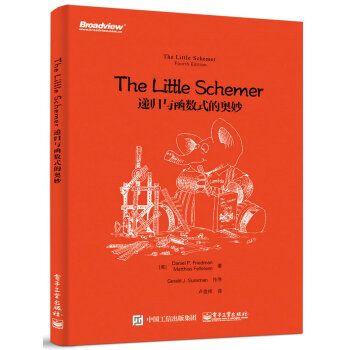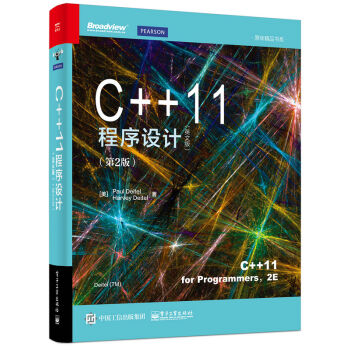

具体描述
产品特色
内容简介
《C++11程序设计(第2版)英文版》利用活代码深入研究C++11 和C++ 标准库。内容包括C++11 的新特性,基于模板的标准库容器、迭代器和算法,C++ 标准库字符串,C++ 标准库数组,构造重要类,面向对象编程的案例研究,异常处理,等等。本书示例丰富,包含了从计算机科学、商业、模拟、游戏和其他主题中挑选出来的各种示例程序,并在三个具有工业强度的C++11 编译器上对代码进行了测试;书中配有大量的插图,包括图表、线条图、UML 图、程序和程序输出。《C++11程序设计(第2版)英文版》适合具有一定高级语言编程背景的程序员阅读。
作者简介
Paul Deitel,Deitel & Associates有限公司的CEO兼CTO,毕业于麻省理工学院,主修信息技术。通过Deitel & Associate有限公司,他已经为行业、政府机关和军队客户提供了数百节编程课程,这些客户包括思科、IBM、西门子、Sun Microsystems、戴尔、Fidelity、肯尼迪航天中心、美国国家强风暴实验室、白沙导弹试验场、Rogue Wave Software、波音公司、SunGard Higher Education、北电网络公司、彪马、iRobot、Invensys等。他和本书的合著者Harvey Deitel博士是畅销全球的编程语言教材、专业书籍和视频的作者。Harvey Deitel博士,Deitel & Associates有限公司的董事长和首席战略官,在计算机领域中拥有五十多年的经验。Deitel博士获得了麻省理工学院电子工程(学习计算)的学士和硕士学位,并获得了波士顿大学的数学博士学位(学习计算机科学)。在20世纪60年代,通过先进的计算机技术和计算机应用公司,他成为了创建各种IBM操作系统的团队中的一员。在20世纪70年代,他创建了商业操作系统。他拥有丰富的大学教学经验,在1991年与儿子Paul Deitel创办Deitel & Associates有限公司之前,他是波士顿大学计算机科学系的主任,并获得了终身任职权。Deitel的出版物获得了国际上的认可,并被翻译为繁体中文、简体中文、韩语、日语、德语、俄语、西班牙语、法语、波兰语、意大利语、葡萄牙语、希腊语、乌尔都语和土耳其语。Deitel博士为很多大公司、学术研究机构、政府机关和军方提供了数百场专业编程讲座。
目录
前言1 Introduction
1.1 Introduction
1.2 C++
1.3 Object Technology
1.4 Typical C++ Development Environment
1.5 Test-Driving a C++ Application
1.6 Operating Systems
1.6.1 Windows―A Proprietary Operating System
1.6.2 Linux―An Open-Source Operating System
1.6.3 Apple’s OS X; Apple’s iOS for iPhone?, iPad? and iPod Touch? Devices
1.6.4 Google’s Android
1.7 C++11 and the Open Source Boost Libraries
1.8 Web Resources
2 Introduction to C++ Programming, Input/Output and Operators
2.1 Introduction
2.2 First Program in C++: Printing a Line of Text
2.3 Modifying Our First C++ Program
2.4 Another C++ Program: Adding Integers
2.5 Arithmetic
2.6 Decision Making: Equality and Relational Operators
2.7 Wrap-Up
3 Introduction to Classes, Objects and Strings
3.1 Introduction
3.2 Defining a Class with a Member Function
3.3 Defining a Member Function with a Parameter
3.4 Data Members, set Member Functions and get Member Functions
3.5 Initializing Objects with Constructors
3.6 Placing a Class in a Separate File for Reusability
3.7 Separating Interface from Implementation
3.8 Validating Data with set Functions
3.9 Wrap-Up
4 Control Statements: Part 1; Assignment, ++ and -- Operators
4.1 Introduction
4.2 Control Structures
4.3 if Selection Statement
4.4 if … else Double-Selection Statement
4.5 while Repetition Statement
4.6 Counter-Controlled Repetition
4.7 Sentinel-Controlled Repetition
4.8 Nested Control Statements
4.9 Assignment Operators
4.10 Increment and Decrement Operators
4.11 Wrap-Up
5 Control Statements: Part 2; Logical Operators
5.1 Introduction
5.2 Essentials of Counter-Controlled Repetition
5.3 for Repetition Statement
5.4 Examples Using the for Statement
5.5 do … while Repetition Statement
5.6 switch Multiple-Selection Statement
5.7 break and continue Statements
5.8 Logical Operators
5.9 Confusing the Equality ( == ) and Assignment ( = ) Operators
5.10 Wrap-Up
6 Functions and an Introduction to Recursion
6.1 Introduction
6.2 Math Library Functions
6.3 Function Definitions with Multiple Parameters
6.4 Function Prototypes and Argument Coercion
6.5 C++ Standard Library Headers
6.6 Case Study: Random Number Generation
6.7 Case Study: Game of Chance; Introducing enum
6.8 C++11 Random Numbers
6.9 Storage Classes and Storage Duration
6.10 Scope Rules
6.11 Function Call Stack and Activation Records
6.12 Functions with Empty Parameter Lists
6.13 Inline Functions
6.14 References and Reference Parameters
6.15 Default Arguments
6.16 Unary Scope Resolution Operator
6.17 Function Overloading
6.18 Function Templates
6.19 Recursion
6.20 Example Using Recursion: Fibonacci Series
6.21 Recursion vs. Iteration
6.22 Wrap-Up
7 Class Templates array and vector ;
Catching Exceptions
7.1 Introduction
7.2 array s
7.3 Declaring array s
7.4 Examples Using array s
7.4.1 Declaring an array and Using a Loop to Initialize the array ’s Elements
7.4.2 Initializing an array in a Declaration with an Initializer List
7.4.3 Specifying an array ’s Size with a Constant Variable and Setting array Elements with Calculations
7.4.4 Summing the Elements of an array
7.4.5 Using Bar Charts to Display array Data Graphically
7.4.6 Using the Elements of an array as Counters
7.4.7 Using array s to Summarize Survey Results
7.4.8 Static Local array s and Automatic Local array s
7.5 Range-Based for Statement
7.6 Case Study: Class GradeBook Using an array to Store Grades
7.7 Sorting and Searching array s
7.8 Multidimensional array s
7.9 Case Study: Class GradeBook Using a Two-Dimensional array
7.10 Introduction to C++ Standard Library Class Template vector
7.11 Wrap-Up
8 Pointers
8.1 Introduction
8.2 Pointer Variable Declarations and Initialization
8.3 Pointer Operators
8.4 Pass-by-Reference with Pointers
8.5 Built-In Arrays
8.6 Using const with Pointers
8.6.1 Nonconstant Pointer to Nonconstant Data
8.6.2 Nonconstant Pointer to Constant Data
8.6.3 Constant Pointer to Nonconstant Data
8.6.4 Constant Pointer to Constant Data
8.7 sizeof Operator
8.8 Pointer Expressions and Pointer Arithmetic
8.9 Relationship Between Pointers and Built-In Arrays
8.10 Pointer-Based Strings
8.11 Wrap-Up
9 Classes: A Deeper Look; Throwing Exceptions
9.1 Introduction
9.2 Time Class Case Study
9.3 Class Scope and Accessing Class Members
9.4 Access Functions and Utility Functions
9.5 Time Class Case Study: Constructors with Default Arguments
9.6 Destructors
9.7 When Constructors and Destructors Are Called
9.8 Time Class Case Study: A Subtle Trap―Returning a Reference or a Pointer to a private Data Member
9.9 Default Memberwise Assignment
9.10 const Objects and const Member Functions
9.11 Composition: Objects as Members of Classes
9.12 friend Functions and friend Classes
9.13 Using the this Pointer
9.14 static Class Members
9.15 Wrap-Up
10 Operator Overloading; Class string
10.1 Introduction
10.2 Using the Overloaded Operators of Standard Library Class string
10.3 Fundamentals of Operator Overloading
10.4 Overloading Binary Operators
10.5 Overloading the Binary Stream Insertion and Stream Extraction Operators
10.6 Overloading Unary Operators
10.7 Overloading the Unary Prefix and Postfix ++ and -- Operators
10.8 Case Study: A Date Class
10.9 Dynamic Memory Management
10.10 Case Study: Array Class
10.10.1 Using the Array Class
10.10.2 Array Class Definition
10.11 Operators as Member vs. Non-Member Functions
10.12 Converting Between Types
10.13 explicit Constructors and Conversion Operators
10.14 Overloading the Function Call Operator ()
10.15 Wrap-Up
11 Object-Oriented Programming: Inheritance
11.1 Introduction
11.2 Base Classes and Derived Classes
11.3 Relationship between Base and Derived Classes
11.3.1 Creating and Using a CommissionEmployee Class
11.3.2 Creating a BasePlusCommissionEmployee Class Without Using Inheritance
11.3.3 Creating a CommissionEmployee ? BasePlusCommissionEmployee Inheritance Hierarchy
11.3.4 CommissionEmployee ? BasePlusCommissionEmployee Inheritance Hierarchy Using protected Data
11.3.5 CommissionEmployee ? BasePlusCommissionEmployee Inheritance Hierarchy Using private Data
11.4 Constructors and Destructors in Derived Classes
11.5 public , protected and private Inheritance
11.6 Software Engineering with Inheritance
11.7 Wrap-Up
12 Object-Oriented Programming: Polymorphism
12.1 Introduction
12.2 Introduction to Polymorphism: Polymorphic Video Game
12.3 Relationships Among Objects in an Inheritance Hierarchy
12.3.1 Invoking Base-Class Functions from Derived-Class Objects
12.3.2 Aiming Derived-Class Pointers at Base-Class Objects
12.3.3 Derived-Class Member-Function Calls via Base-Class Pointers
12.3.4 Virtual Functions and Virtual Destructors
12.4 Type Fields and switch Statements
12.5 Abstract Classes and Pure virtual Functions
12.6 Case Study: Payroll System Using Polymorphism
12.6.1 Creating Abstract Base Class Employee
12.6.2 Creating Concrete Derived Class SalariedEmployee
12.6.3 Creating Concrete Derived Class CommissionEmployee
12.6.4 Creating Indirect Concrete Derived Class BasePlusCommissionEmployee
12.6.5 Demonstrating Polymorphic Processing
12.7 (Optional) Polymorphism, Virtual Functions and Dynamic Binding“Under the Hood”
12.8 Case Study: Payroll System Using Polymorphism and Runtime Type Information with Downcasting, dynamic_cast , typeid and
type_info
12.9 Wrap-Up
13 Stream Input/Output: A Deeper Look
13.1 Introduction
13.2 Streams
13.2.1 Classic Streams vs. Standard Streams
13.2.2 iostream Library Headers
13.2.3 Stream Input/Output Classes and Objects
13.3 Stream Output
13.3.1 Output of char * Variables
13.3.2 Character Output Using Member Function put
13.4 Stream Input
13.4.1 get and getline Member Functions
13.4.2 istream Member Functions peek , putback and ignore
13.4.3 Type-Safe I/O
13.5 Unformatted I/O Using read , write and gcount
13.6 Introduction to Stream Manipulators
13.6.1 Integral Stream Base: dec , oct , hex and setbase
13.6.2 Floating-Point Precision ( precision , setprecision )
13.6.3 Field Width ( width , setw )
13.6.4 User-Defined Output Stream Manipulators
13.7 Stream Format States and Stream Manipulators
13.7.1 Trailing Zeros and Decimal Points ( showpoint )
13.7.2 Justification ( left , right and internal )
13.7.3 Padding ( fill , setfill )
13.7.4 Integral Stream Base ( dec , oct , hex , showbase )
13.7.5 Floating-Point Numbers; Scientific and Fixed Notation( scientific , fixed )
13.7.6 Uppercase/Lowercase Control ( uppercase )
13.7.7 Specifying Boolean Format ( boolalpha )
13.7.8 Setting and Resetting the Format State via Member Function flags
13.8 Stream Error States
13.9 Tying an Output Stream to an Input Stream
13.10 Wrap-Up
14 File Processing
14.1 Introduction
14.2 Files and Streams
14.3 Creating a Sequential File
14.4 Reading Data from a Sequential File
14.5 Updating Sequential Files
14.6 Random-Access Files
14.7 Creating a Random-Access File
14.8 Writing Data Randomly to a Random-Access File
14.9 Reading from a Random-Access File Sequentially
14.10 Case Study: A Transaction-Processing Program
14.11 Object Serialization
14.12 Wrap-Up
15 Standard Library Containers and Iterators
15.1 Introduction
15.2 Introduction to Containers
15.3 Introduction to Iterators
15.4 Introduction to Algorithms
15.5 Sequence Containers
15.5.1 vector Sequence Container
15.5.2 list Sequence Container
15.5.3 deque Sequence Container
15.6 Associative Containers
15.6.1 multiset Associative Container
15.6.2 set Associative Container
15.6.3 multimap Associative Container
15.6.4 map Associative Container
15.7 Container Adapters
15.7.1 stack Adapter
15.7.2 queue Adapter
15.7.3 priority_queue Adapter
15.8 Class bitset
15.9 Wrap-Up
16 Standard Library Algorithms
16.1 Introduction
16.2 Minimum Iterator Requirements
16.3 Algorithms
16.3.1 fill , fill_n , generate and generate_n
16.3.2 equal , mismatch and lexicographical_compare
16.3.3 remove , remove_if , remove_copy and remove_copy_if
16.3.4 replace , replace_if , replace_copy and replace_copy_if
16.3.5 Mathematical Algorithms
16.3.6 Basic Searching and Sorting Algorithms
16.3.7 swap , iter_swap and swap_ranges
16.3.8 copy_backward , merge , unique and reverse
16.3.9 inplace_merge , unique_copy and reverse_copy
16.3.10 Set Operations
16.3.11 lower_bound , upper_bound and equal_range
16.3.12 Heapsort
16.3.13 min , max , minmax and minmax_element
16.4 Function Objects
16.5 Lambda Expressions
16.6 Standard Library Algorithm Summary
16.7 Wrap-Up
17 Exception Handling: A Deeper Look
17.1 Introduction
17.2 Example: Handling an Attempt to Divide by Zero
17.3 Rethrowing an Exception
17.4 Stack Unwinding
17.5 When to Use Exception Handling
17.6 Constructors, Destructors and Exception Handling
17.7 Exceptions and Inheritance
17.8 Processing new Failures
17.9 Class unique_ptr and Dynamic Memory Allocation
17.10 Standard Library Exception Hierarchy
17.11 Wrap-Up
18 Introduction to Custom Templates
18.1 Introduction
18.2 Class Templates
18.3 Function Template to Manipulate a Class-Template Specialization Object
18.4 Nontype Parameters
18.5 Default Arguments for Template Type Parameters
18.6 Overloading Function Templates
18.7 Wrap-Up
19 Class string and String Stream Processing: A Deeper Look
19.1 Introduction
19.2 string Assignment and Concatenation
19.3 Comparing string s
19.4 Substrings
19.5 Swapping string s
19.6 string Characteristics
19.7 Finding Substrings and Characters in a string
19.8 Replacing Characters in a string
19.9 Inserting Characters into a string
19.10 Conversion to Pointer-Based char * Strings
19.11 Iterators
19.12 String Stream Processing
19.13 C++11 Numeric Conversion Functions
19.14 Wrap-Up
20 Bits, Characters, C Strings and struct s
20.1 Introduction
20.2 Structure Definitions
20.3 typedef
20.4 Example: Card Shuffling and Dealing Simulation
20.5 Bitwise Operators
20.6 Bit Fields
20.7 Character-Handling Library
20.8 C String-Manipulation Functions
20.9 C String-Conversion Functions
20.10 Search Functions of the C String-Handling Library
20.11 Memory Functions of the C String-Handling Library
20.12 Wrap-Up
21 Other Topics
21.1 Introduction
21.2 const_cast Operator
21.3 mutable Class Members
21.4 namespace s
21.5 Operator Keywords
21.6 Pointers to Class Members ( .* and ->* )
21.7 Multiple Inheritance
21.8 Multiple Inheritance and virtual Base Classes
21.9 Wrap-Up
22 ATM Case Study, Part 1:Object-Oriented Design with the UML
22.1 Introduction
22.2 Introduction to Object-Oriented Analysis and Design
22.3 Examining the ATM Requirements Document
22.4 Identifying the Classes in the ATM Requirements Document
22.5 Identifying Class Attributes
22.6 Identifying Objects’ States and Activities
22.7 Identifying Class Operations
22.8 Indicating Collaboration Among Objects
22.9 Wrap-Up
23 ATM Case Study, Part 2:Implementing an Object-Oriented Design
23.1 Introduction
23.2 Starting to Program the Classes of the ATM System
23.3 Incorporating Inheritance into the ATM System
23.4 ATM Case Study Implementation
23.4.1 Class ATM
23.4.2 Class Screen
23.4.3 Class Keypad
23.4.4 Class CashDispenser
23.4.5 Class DepositSlot
23.4.6 Class Account
23.4.7 Class BankDatabase
23.4.8 Class Transaction
23.4.9 Class BalanceInquiry
23.4.10 Class Withdrawal
23.4.11 Class Deposit
23.4.12 Test Program ATMCaseStudy.cpp
23.5 Wrap-Up
A Operator Precedence and Associativity
B ASCII Character Set
C Fundamental Types
D Number Systems
D.1 Introduction
D.2 Abbreviating Binary Numbers as Octal and Hexadecimal Numbers
D.3 Converting Octal and Hexadecimal Numbers to Binary Numbers
D.4 Converting from Binary, Octal or Hexadecimal to Decimal
D.5 Converting from Decimal to Binary, Octal or Hexadecimal
D.6 Negative Binary Numbers: Two’s Complement Notation
E Preprocessor
E.1 Introduction
E.2 #include Preprocessing Directive
E.3 #define Preprocessing Directive: Symbolic Constants
E.4 #define Preprocessing Directive: Macros
E.5 Conditional Compilation
E.6 #error and #pragma Preprocessing Directives
E.7 Operators # and ##
E.8 Predefined Symbolic Constants
E.9 Assertions
E.10 Wrap-Up
Index
线上章节及附录
第 24 章及附录 F~K 为 PDF 文档
前言/序言
“语言的首要价值是清晰……”——Galen
欢迎阅读本书。本书会向软件开发人员介绍最先进的计算技术。
我们专注于软件工程的最佳实践。本书沿用了Deitel特色的“程序实况解说”风格——用完整的可运行程序(而不是代码片段)来解释相关概念。每个完整的代码示例都配有生动的示例。所有的源代码都可以从下面的网址下载:
如果你在阅读本书时遇到任何困难,请发送邮件到:
我们会及时回复你。要了解本书的最新信息,加入我们的Facebook社区、Twitter社区、Google+社区和LinkedIn社区,你还可以订阅Deitel Buzz Online电子邮件新闻简报。
本书特色
本书的主要特色如下所述。
C++11标准
2011年发布的C++11新标准是我们写这本书的动机。我们使用标有“11”的图标来表示在本书中提到的每个C++11新特性,如本页的空白处所示。这一版包含的一些C++11特性如下。
符合C++11新标准。广泛地覆盖了C++11的新特性。
在3个具有工业强度的C++11编译器上对代码进行了测试。我们在GNU C++ 4.7、Microsoft Visual C++ 2012和Apple Xcode 4.5的LLVM上对代码示例进行了测试。
智能指针。智能指针可以帮助你避免动态由于提供了内置指针无法实现的功能而导致的内存管理错误。我们将在第17章讨论unique_ptr,在第24章讨论shared_ptr和weak_ptr。
更早地介绍基于模板的标准库容器、迭代器和算法,并用C++11新特性对这些内容进行了扩充。我们将第1版中位于第20章的标准库容器、迭代器和算法的处理移到了第15章和第16章,并且使用C++11新特性对这些内容进行了扩充。你需要的绝大多数数据结构都可以通过重用这些标准库来实现。
在线阅读第24章。我们将在这一章介绍C++11的其他主题。C++11新标准是在2011年发布的,但并非所有的C++编译器都完全支持这些特性。在我们编写本书时,如果某个C++特性已经在这3个主要的编译器中实现了,我们就用文本和代码实例来介绍该特性。如果这3个编译器都没有实现该特性,我们就用粗斜体标题和对这个特性的简短说明来介绍它。当这些特性被编译器实现时,我们就会在第24章对这些简短说明进行扩充。之所以将本章放在网上,是因为这样做我们就可以动态更新其内容。本章包含对正则表达式、shared_ptr和weak_ptr智能指针、移动语义等的讨论。你可以通过以下网址访问本章:
R随机数生成、模拟和游戏。为了让程序更安全(参见下一页的“C++安全编程”一节),我们会在本书中讨论C++11的非确定性随机数生成机制。
面向对象程序设计
提早介绍对象。我们在本书的第1章就介绍了对象技术的基本概念和术语,在第3章将会带你开发一个自定义的C++类和对象。
C++标准库字符串。C++提供了两种类型的字符串——字符串类对象(从第3章开始使用)和C字符串(来自C语言)。我们用C++字符串类的实例替换了大多数C字符串,以便让程序变得更健壮,并消除C字符串带来的很多安全问题。我们稍后会在本书中讨论C字符串,以便让你能够使用工业上的遗留代码。在新的开发项目中,你应该支持字符串对象。
C++标准库数组。我们在本书中使用的主要是标准库的数组类模板,而不是内置的、C风格的、基于指针的数组。但我们还是会介绍内置数组,因为它们仍然会被用在C++中,而且了解它才能够阅读遗留代码。C++提供了三种类型的数组——类模板数组、vector(从第7章开始使用),以及C风格的、基于指针的数组(在第8章介绍)。我们在本书中会酌情使用模板数组和类模板vector(偶尔),而不是C数组。在新的开发项目中,你应该支持类模板数组和vector。
构造重要类。本书的一个主要目标是让你构造重要的、可重用的C++类。在第10章的案例研究中,你将创建自己的自定义Array类。第10章以类模板字符串的测试驱动开始,这样在你使用重载操作符实现自己的自定义类前,可以先看到如何使用操作符重载。
面向对象编程的案例研究。我们提供了跨越多个章节并涵盖了软件开发生命周期的案例研究。这些案例研究包括第3~7章的GradeBook类,第9章的Time类和第11章、第12章的Employee类。第12章用详细的图表说明了C++如何“在幕后”实现多态、虚函数和动态绑定。
可选案例研究:使用UML创建一个ATM的面向对象设计和C++实现。UML(统一建模语言,Unified Modeling Language)是为面向对象系统建模的行业标准图形化语言。我们在本书的前几章就介绍了UML。第22章和第23章包含使用UML来进行面向对象设计的可选案例研究。我们设计并实现了一个简单的自动取款机(ATM)的软件。我们分析了一个指定如何构建系统的典型需求文档。我们确定了实现该系统所需要的类、这些类需要拥有的属性和这些类需要表现出的行为,我们还指定了这些类必须如何交互才能满足系统需求。我们根据设计产生了一个完整的C++实现。读者经常反馈说这个案例研究“将所有内容都联系起来”,并让他们对面向对象有了更深入的了解。
异常处理。在本书的前几章就包含了基本的异常处理。你可以从第17章来了解异常处理的更多内容。
主要的编程范式。我们在本书中讨论了面向对象编程和泛型编程。
教学特色
示例。本书包含了从计算机科学、商业、模拟、游戏和其他主题中挑选出来的各种示例程序。
插图和图。本书包含了大量的图表、线条图、UML图、程序和程序输出。
其他特色
指针。本书详细地介绍了内置指针,以及内置指针、C字符串和内置数组之间的密切关系。
调试器附录。本书包含了3个调试器附录——附录H,讲述Visual Studio调试器的使用;附录I,讲述GNU C++调试器的使用;附录J,讲述Xcode调试器的使用。
C++安全编程
很难创建出可以抵抗病毒、蠕虫等其他“恶意软件”攻击的、具有工业强度的系统。如今,通过互联网,这类攻击瞬间就可以对全球范围造成影响。从开发周期的一开始就在软件中加入安全性,可以大大减少安全风险。
人们创建了CERT Coordination Center来分析和及时应对攻击。CERT(计算机安全应急响应小组,Computer Emergency Response Team)是一个政府资助的组织,位于卡内基梅隆大学软件工程研究所。CERT会发布和推广各种流行编程语言的安全编码标准,帮助软件开发人员实现具有工业强度的系统,从而避免会造成开放式系统受到攻击的编程实践。
我们要感谢Robert C. Seacord,他是CERT的安全编程管理员和卡内基梅隆大学计算机科学系的副教授。Seacord先生是C How to Program, 7e一书的技术评审,他从安全角度审查了这本书中的C语言程序,并建议我们遵守CERT C语言安全编程标准。
本书也遵守CERT C++安全编码标准指南(符合书籍水平),你可以通过以下网址找到该指南:
www.securecoding.cert.org
我们很高兴地发现,从20世纪90年代早期开始我们就在书籍中推荐了这些编程实践。如果你要创建具有工业强度的C++系统,就一定不要错过Secure Coding in C and C++, 2e(Robert Seacord,Addison-Wesley Professional出版)。
教学方法
本书强调的是程序的清晰性,并专注于构建良好的软件工程。
程序实况解说。本书包含上百个“程序实况解说”示例——每个新概念都是在完整的可运行C++程序中提出的,紧接着是显示该程序输入和输出的一个或者多个实际执行。
语法着色。为了增加可读性,我们为代码添加了语法阴影,这与大多数IDE和代码编辑器给代码的语法添加颜色是类似的。我们采用的代码的着色约定是:
注释用常规字体表示
关键字用粗黑字体表示
常量和字面值用比关键字稍浅一点的粗灰字来表示
所有的其他代码以黑体表示
代码高亮显示。本书在每个源代码程序的关键代码段都放置了一个灰色的矩形框。
使用字体突出显示。为了便于参考,我们用粗体表示每个定义性出现的关键概念和索引的页面引用,用加粗的Helvetica字体来强调屏幕组件(例如,File菜单),用Lucida字体来强调C语言程序文本(例如,int x = 5;)。
网页存取。所有的源代码示例都可以从以下网址下载:
目标。每章都包含一个本章目标的列表。
编程技巧。我们提供了编程技巧来帮助你关注程序开发的重要方面。这些技巧和实践是我们在8年编程和企业培训经验中积累的精华。最佳编程实践
最佳编程实践让读者关注那些有助于产生更清晰、更易理解和维护程序的技术。
常见编程错误
指出这些常见的编程错误可以降低读者犯类似错误的可能性。
错误预防技巧
这些技巧包括揭露和删除程序中bug的建议;大多数技巧描述的是如何预防将bug带入C++程序中。
性能技巧
这些技巧强调的是如何让程序运行得更快,或者尽量减少它们占用的内存。
可移植性技巧
可移植性技巧可以帮助你编写能够在各种平台上运行的代码。
软件工程意见
软件工程意见强调的是影响软件系统(尤其是大型系统)构建的架构和设计问题。
在线章节和附录
下面的章节和附录可以在线获取。
第24章,C++11的其他主题(C++11: Additional Features)。
附录F,C遗留代码主题(C Legacy Code Topics)。
附录G,UML 2:其他图表类型(UML 2: Additional Diagram Types)。
附录H,Visual Studio调试器的使用(Using the Visual Studio Debugger)。
附录I,GNU C++调试器的使用(Using the GNU C++ Debugger)。
附录J,Xcode调试器的使用(Using the Xcode Debugger)。
附录K,对Mac OS X上C++程序的测试驱动(Test Driving a C++ Program on Mac OS X)。
可以通过以下网址访问在线章节和附录:
www.informit.com/register
你需要注册一个InformIT账号,并登录。登录后,你就能看到一个“Register a Product”框。输入本书的ISBN(9780133439854)就可以访问本书的在线章节和附录了。
获取本书使用的软件
本书的代码示例是通过下面的C++开发工具来编写的:
用于Windows桌面的免费Visual Studio Express 2012,其中包含了Visual C++和其他Microsoft开发工具。它可以在Windows 7和Windows 8中运行,并可以从如下网址下载。
www.microsoft.com/express
GNU的免费GNU C++(gcc.gnu.org/install/binaries.html),其中大多数Linux系统都已经预先安装了该编译器,它还可以被安装到Mac OS X和Windows系统中。
Apple的免费Xcode,OS X用户可以从Mac App Store中下载它。
C++11基础:LiveLessons视频培训产品的第I部分~第III部分
“C++ 11基础:LiveLessons视频培训产品的第I部分~第III部分”介绍了开始使用C++构建健壮的、强大的软件时所需要知道的内容。它包含了二十多个小时与本书同步的专家培训。要了解关于Deitel LiveLesssons视频产品的更多信息,请访问
www.deitel.com/livelessons
或者可以通过deitel@deitel.com联系我们。如果你已经订阅了Safari Books Online(www.safaribooksonline.com),你还可以获取我们的LiveLessons视频。这些LiveLessons已于2013年夏季上线。
致谢
我们要感谢Deitel & Associates有限公司的Abbey Deitel和Barbara Deitel。他们为这个项目投入了大量时间。Abbey参与撰写了本书的第1章和前言,她和Barbara仔细研究了C++11的新功能。
我们有幸与Prentice Hall/Pearson的出版专家团队共同完成该项目。我们要感谢培生科技出版集团的主编Mark L. Taub给我们的指导和为此付出的精力。我们要感谢Carole Snyder出色地完成了招募优秀的C++社区成员来审稿的工作;感谢Chuti Prasertsith为本书设计了具有创造力和精确度的封面——我们把自己对封面的构想告诉他,而他准确地实现了它;感谢John Fuller出色地完成了我们的Deitel开发人员系统图书和LiveLessons视频产品的出版工作。
审稿人员
还要感谢本书审稿人员的付出,他们提出的建设性的批评意见帮助我们完成了本书的新版本。他们完成了对本书文本和程序的审查,并为提高本书的表述方式提供了无数建议,他们是:Dean Michael Berris(谷歌,ISO C++委员会成员)、Danny Kaley(C++专家,经过认证的系统分析师和C++标准委员会的前成员)、Linda M. Krause(艾姆赫斯特学院)、James P. McNellis(微软公司)、Robert C.Seacord(SEI/CERT的安全编码管理员、Secure Coding in C and C++一书的作者)、José Antonio González Seco(西班牙安达卢西亚议会议员)、Virginia Bailey(杰克逊州立大学)、Thomas J. Borrelli(罗彻斯特理工学院)、Ed Brey(科勒有限公司)、Chris Cox(Adobe系统有限公司)、Gregory Dai(eBay)、Peter J. DePasquale(美国新泽西学院)、John Dibling(SpryWare)、Susan Gauch(阿肯色大学)、Doug Gregor(苹果公司)、Jack Hagemeister(华盛顿州立大学)、Williams M. Higdon(美国印第安纳大学)、Anne B. Horton(Lockheed Martin公司)、Terrell Hull(Logicalis集成解决方案)、Ed James-Beckham(Borland公司)、Wing-Ning Li(阿肯色大学)、Dean Mathias(犹他州立大学)、Robert A. McLain(潮水社区学院)、Robert Myers(佛罗里达州立大学)、Gavin Osborne(萨斯喀彻温省应用科技学院)、Amar Raheja(加利福尼亚大学波莫纳分校)、April Reagan(微软)、Raymond Stephenson(微软)、Dave Topham(美国奥龙尼学院)、Anthony Williams(作家和C++标准委员会成员)和Chad Willwerth(华盛顿大学塔科马分校)。
真诚地欢迎读者提出可以提高本书质量的意见、批评、更正和建议,请将它们发送
我们会及时回复你。我们在编写本书时享受到了很多乐趣。希望你也能在本书的阅读过程中得到乐趣。
Paul Deitel
Harvey Deitel
用户评价
这本书就像一股清流,在C++这片早已被海量教材淹没的海洋中,为我指明了一条清晰的航向。我尤其欣赏它对C++11新特性的阐述,那些曾经让我头疼不已的lambda表达式、右值引用、智能指针等,在这本书里被拆解得如此透彻,仿佛一个经验丰富的向导,一步步引领我穿越迷雾。不仅仅是概念的堆砌,书中穿插的大量实战案例更是让我爱不释手。那些精心设计的代码片段,不仅仅是为了演示某个特性,而是将它巧妙地融入到实际的编程场景中,让我能立刻体会到新特性带来的好处,比如更简洁的代码、更安全的内存管理,以及更高效的并发编程。读这本书的过程,更像是在与一位资深的C++工程师进行一对一的交流,他不仅传授知识,更分享了宝贵的经验和最佳实践。从基础语法的回顾,到高级特性的深入剖析,再到面向对象设计原则的讲解,每一个环节都衔接得恰到好处,让我感觉知识体系在不断完善和巩固。这本书对于想要深入理解C++11精髓的开发者来说,绝对是不可多得的宝藏,它不仅仅是一本技术手册,更像是一本能够启发思考、提升编程品味的艺术品。
评分我是一名已经从事C++开发多年的工程师,但一直觉得在C++11的新特性方面还存在一些盲点。偶然间发现了这本《C++11程序设计(第2版 英文版)》,抱着试试看的心态翻阅,结果惊喜不断。这本书的深度和广度都超出了我的预期。作者在讲解每个新特性时,不仅仅是介绍它“是什么”,更重要的是解释它“为什么”被设计出来,以及它在实际开发中能解决哪些痛点。特别是对移动语义和完美转发的讲解,简直是业界典范,我之前对这块的理解一直模模糊糊,读完之后豁然开朗。书中还包含了很多关于标准库的介绍,比如STL的各种算法和容器在新版本中的改进,以及新加入的并发库的使用等等,这些都是我们在日常开发中经常会遇到的问题。这本书让我对C++11有了更全面、更深刻的认识,也激发了我对C++语言本身更深层次的探索欲望。
评分这本书的英文原版,恰到好处地保留了C++11那些精炼且富有表现力的语言风格。我一直在寻找一本能够真正帮助我“理解”C++11,而不是简单“记住”它的书籍,而这本《C++11程序设计》无疑满足了我的需求。它深入浅出地剖析了C++11的各个方面,从最基础的类型推导到复杂的并发模型,作者都给予了详尽的解释和恰当的示例。尤其是它对RAII(Resource Acquisition Is Initialization)模式的强调,以及如何利用C++11的特性(如智能指针)更好地实践这一模式,对我来说是受益匪浅。在阅读过程中,我能感受到作者在编写这本书时,对每一个细节都进行了反复斟酌,力求将最清晰、最准确的信息传递给读者。它不是一本仅仅罗列新特性的速查手册,而是一本引导读者理解C++11设计哲学,并将其应用于实际开发的深度指南。这本书帮助我提升了代码的抽象能力和设计能力,让我能够写出更具可维护性、可扩展性和健壮性的C++程序。
评分初次翻开这本书,就被它那直观而富有条理的排版吸引了。每个章节都围绕着一个核心主题展开,理论讲解清晰明了,辅以大量的代码示例,简直是学习C++11的最佳伴侣。我特别喜欢它在讲解某些复杂概念时,采用的类比和图示。比如,在解释完美转发时,作者用了一个非常生动的比喻,瞬间就让我茅塞顿开,之前困扰我许久的难题迎刃而解。书中的代码质量也非常高,每一段代码都经过精心打磨,简洁、高效,而且充满了智慧。不仅仅是枯燥的技术讲解,作者在字里行间流露出的对C++的热情和深刻理解,也深深地感染了我。阅读这本书,就像在与一位老友畅谈,他用最平实的语言,将最深奥的知识娓娓道来。它帮助我建立起了一个扎实的C++11知识体系,让我在面对实际项目时,能够更加自信地运用新特性,写出更具现代感、更具可读性的代码。这本书的价值,远不止于技术本身,更在于它所传递的编程思想和解决问题的能力。
评分这本书的结构设计堪称完美,层层递进,循序渐进。从C++11的基础语法和核心概念入手,逐步深入到更复杂的范式和高级特性。我认为它最出色的地方在于,能够将抽象的理论知识与具体的编程实践完美结合。作者在阐述每一个新特性时,都配有高质量、可运行的代码示例,而且这些示例都经过精心设计,能够清晰地展示出该特性的应用场景和优势。我尤其欣赏书中对于“如何使用C++11编写更现代化、更高效的代码”的探讨,它不仅仅是介绍新语法,更是引导读者去思考如何利用这些新工具来优化设计、提升性能、减少错误。读完这本书,我感觉自己对C++这门语言的理解上了一个新的台阶,编程思维也得到了极大的提升。这本书对于任何想要精通C++11,并将其融入到实际开发中的程序员来说,都是一本不可或缺的参考书。
评分bsbsnsnnsmsskskjsjhj
评分呵呵哈哈哈姐姐
评分呵呵哈哈哈姐姐
评分bsbsnsnnsmsskskjsjhj
评分bsbsnsnnsmsskskjsjhj
评分bsbsnsnnsmsskskjsjhj
评分bsbsnsnnsmsskskjsjhj
评分bsbsnsnnsmsskskjsjhj
评分好
相关图书
本站所有内容均为互联网搜索引擎提供的公开搜索信息,本站不存储任何数据与内容,任何内容与数据均与本站无关,如有需要请联系相关搜索引擎包括但不限于百度,google,bing,sogou 等,本站所有链接都为正版商品购买链接。
© 2025 windowsfront.com All Rights Reserved. 静流书站 版权所有


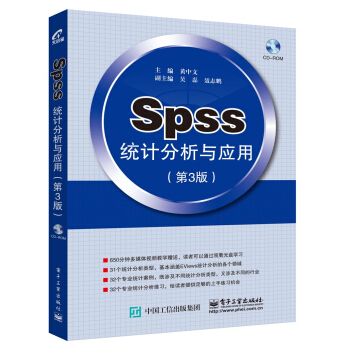
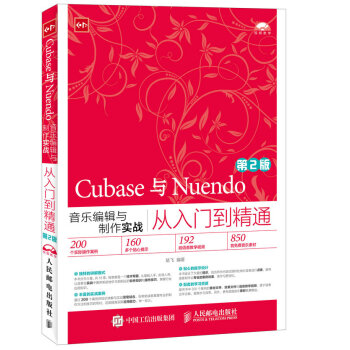


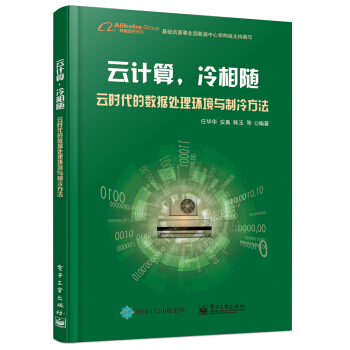
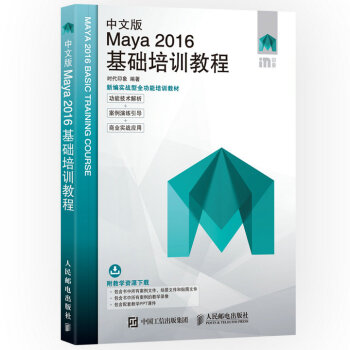
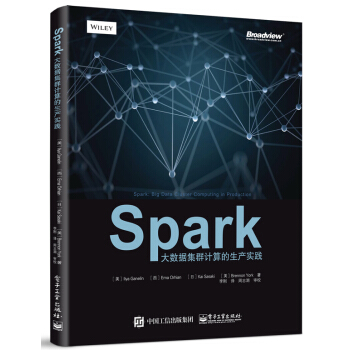

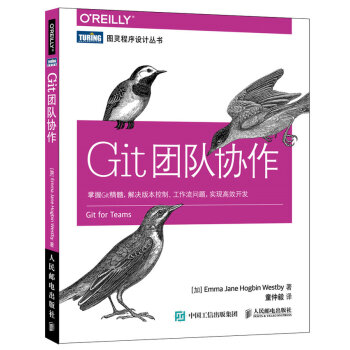
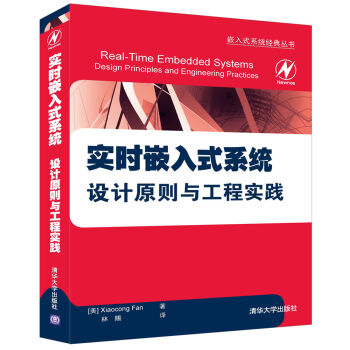
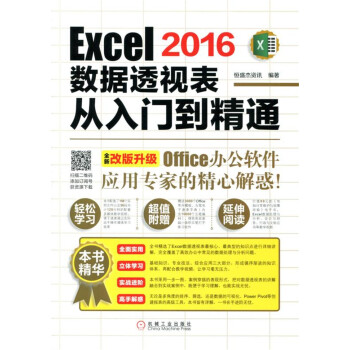
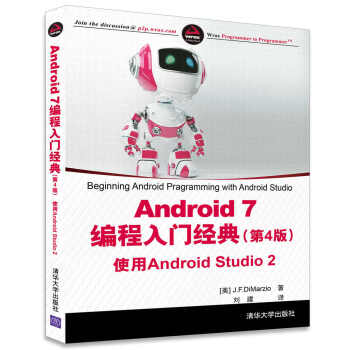

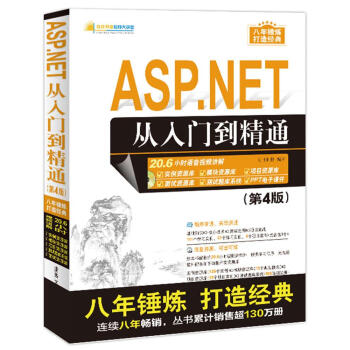
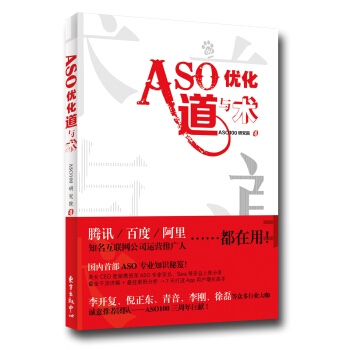
![工业机器人设计与应用 [Design and Application of Industrial Robot] pdf epub mobi 电子书 下载](https://pic.windowsfront.com/12108998/5885cc0cNdcd52a95.jpg)

